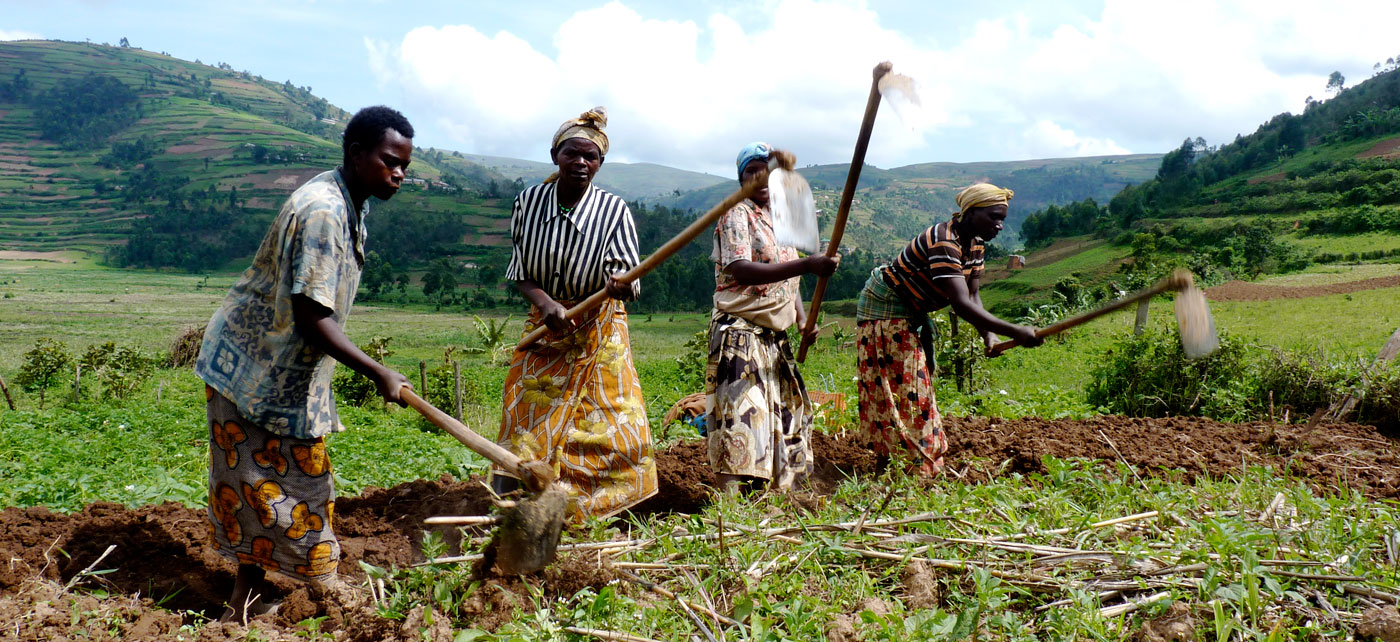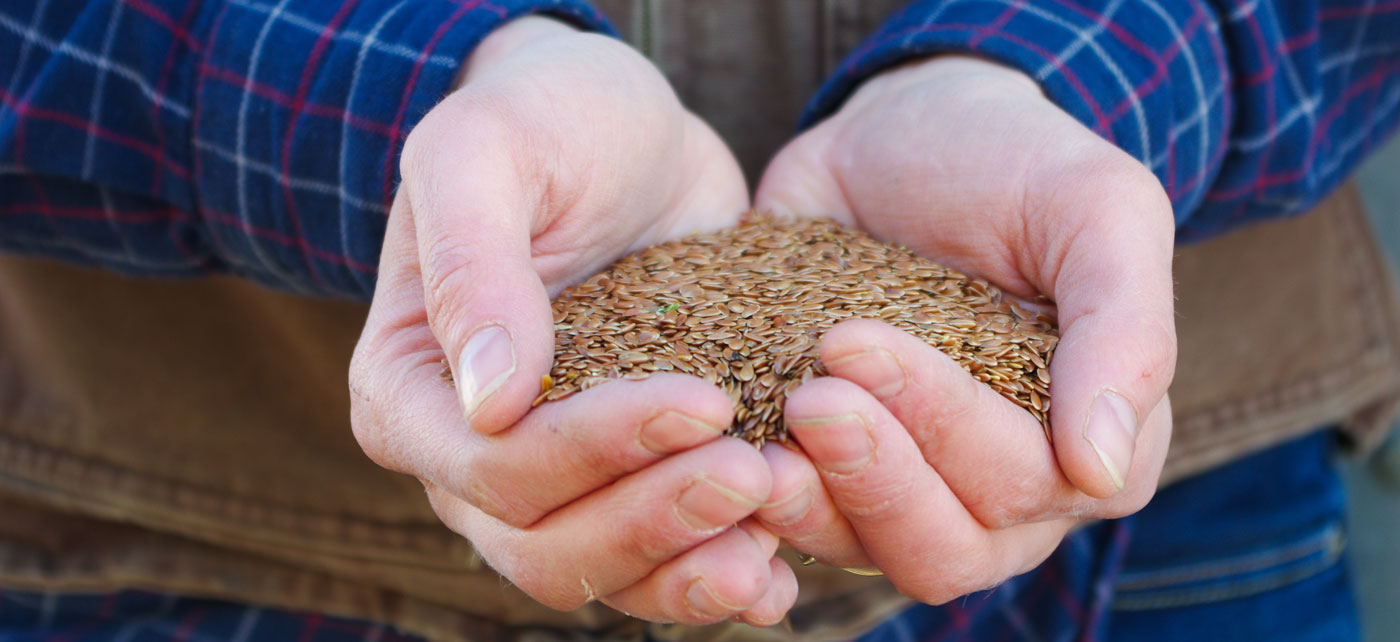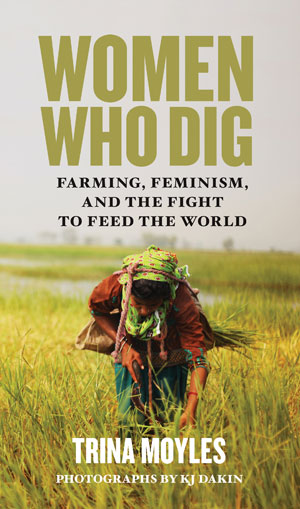Women Who Dig: A Pastoral Meditation on Time
Maria Ramirez, a Mayan-Mam farmer from Comitancillo, Guatemala, cradles a corn husk from the last harvest. Mayan-Mam women plant the three sisters—corn, beans, and squash—after the new moon. Everything from the harvest is saved, including the husks, which are kept to grind into animal feed. Photo by K.J. Dakin.
By Trina Moyles
When the first roosters crow in southwestern Uganda, the world outside steeps in darkness.
By the second crow, the abahingi mukazi, a local Bakiga word to describe the “women who dig,” or women farmers, stir in their beds. Light slips under the lid of the sky. After the third crow of the rooster, girls and women rise for the morning rituals: kindling the fires, boiling water for porridge and heating up leftover sweet potatoes and cassava for breakfast.
Six days a week, women farmers prepare to work in the fields, readying the necessities: water, lunch, tools, seeds, children, infants and goats. When the sun has been born from the horizon, they set out in small groups of two or three or four, walking to reach their garden plots.
Women farmers do what nature demands of them: plow the land by hand, bend and weed between the rows of beans, bury sweet potato vines in the soil or harvest the heavy-headed boughs of sorghum seed. Women work until the sun rises directly above their heads. They work until they can’t ward off the hunger pangs any longer, swinging their hand-hoes, singing collectively, until the sun becomes too harsh, the rain too persistent or the sun slouches low over the western horizon.
Women farmers don’t wear time on their wrists; they don’t clock in, clock out. Women on the land absorb time with their eyes and all senses—assessing the position of the sun and the quality of light in the sky, the length of their days governed by nature and the elements. Their work follows a rhythm according to the natural world: seed and plant growth, sun and moon, rain and drought, sun and snow, lightness and darkness.

The abahingi mukazi, the “women who dig,” meet daily to work collectively in their fields in southwestern Uganda. There is a time to plow, plant and harvest, but there is always time to socialize. There is no separation between work and socialization for the woman farmers. Photo by Trina Moyles.
From 2013 to 2016, I travelled to eight different countries on four continents to ask the question, what does it mean to be a woman farmer? I collected women’s stories of struggle and triumph in my book Women Who Dig: Farming, Feminism, and the Fight to Feed the World (University of Regina Press, 2018). I stepped away from the urban bustle and capitalist structures, and back into pastoral settings where women’s experiences extend beyond the 9-to-5 to what one young Canadian farmer joked was actually the 6-to-10.
When you own 100 head of cattle or 200 ducks, it’s actually 24 hours.
Women measure not minutes or weeks or months but, rather, the height of a grain crop, the swelling of a rain cloud, the fattening of a cow and the rhythm of changing seasons. They measure time by watching their children grow from infants tied to their backs to five-year-olds grazing goats to teenagers who join them in the fields with hand-hoes.
For women on the land, there is a time for everything: plowing, sowing, weeding, harvesting and taking crops to market. There are social celebrations and rituals interwoven with various stages of agriculture and cultural taboos, too.
For women on the land, there is a time for everything: plowing, sowing, weeding, harvesting and taking crops to market. There are social celebrations and rituals interwoven with various stages of agriculture and cultural taboos, too.
For example, the Bakiga women of southwestern Uganda try to avoid giving birth just before the sorghum harvest. “The sorghum harvest is the worst time to have a newborn,” explained a woman farmer named Mariam. “The leaves are sharp and could easily cut the baby. You can’t leave your baby on the ground for fear of snakes hiding in the dense crop cover.” Mariam gave birth to her own son in a field of cowpeas.
In northwestern Guatemala, I met Mayan-Mam women who learned the ancient practice of planting with the moon cycles, sowing las tres hermanas, the three sisters—maize, beans and squash—after the new moon. Similarly, in Canada, the Old Farmer’s Almanac encourages farmers to plant potatoes and root crops following the full moon. Perhaps, when the earliest European settlers saw the September full moon rising over their fields like a golden coin, they knew it was time to get the grain crop off the fields.
But the weather trumps everything, even old, unshakeable lunar cycles.
“The first day of frost is more important than the first day of fall on the calendar,” said a Canadian woman who grew up on a bison and grain farm. More important than a fixed date, women farmers take their cues from nature. Time may be a very short window, indeed. For Canadian women, there may only be a few days to get their crop off the fields before the snow flies. In southern India, women must wait for a specific kind of rain that signals the monsoon season. The rain must slap down and flood the fields before the women whisper prayers and sow handfuls of rice.

Sarah Weigum cradles a handful of last year’s flax harvest at her farm in Three Hills, Alberta. Women farmers watch the weather to determine when to harvest. They don’t rely on calendars, or fixed dates; they rely on knowledge, past experiences and intuition. Photo by Trina Moyles.
In Cuba, an island nation that’s survived decades of the U.S. economic embargo and the scarcity of resources and goods, women farmers have adapted accordingly, inventing tools or farm inputs they can’t find elsewhere. It’s taken time to grow solutions in Cuba, however, and there’s even proof in the language.
The Spanish word ahora translates literally to “now.” In other Latin countries, it means “more or less now,” but in Cuba it could mean “in an hour or so.” They’ve invented their own spin on the word: Ahorrita, Cuban women say, if they want something absolutely right now.
Western visitors tend to poke fun at the concept of “Cuban time,” perhaps with a patronizing tone in their voices, but they lack context to understand the crisis that Cubans survived after the Soviet Union, their main trading partner, collapsed in 1989. Fidel Castro labelled the economic crisis “The Special Period.” Cubans became so accustomed to waiting for hours, even all day, in line-ups—line-ups to get on the next bus, line-ups to buy pork and rice, line-ups for daily milk rations—that they invented their own system of waiting. There are no lines-ups in Cuba. People wait, hidden under the shade, in scattered groups. But they know who is the first and who is the last in line. “Quien es la ultima?” (Who is the last?) the person who wants to join the line-up asks politely and that person will raise his or her hand. And, so it goes.
There are no lines-ups in Cuba. People wait, hidden under the shade, in scattered groups. But they know who is the first and who is the last in line. “Quien es la ultima?” (Who is the last?) the person who wants to join the line-up asks politely and that person will raise his or her hand.
For many farmers, the concept of time isn’t fixed: It’s a constantly evolving process.
Except for the Mexican farmworkers I met in Sonoma County, California. There, women, many of them having crossed into the U.S. illegally, raced against the Western clock to pick as many grapes as possible during a 10-hour shift. Their fingers flew on the vines, picking under the stars, under the floodlights set up above the vineyards. Wine grapes are often picked at night when the temperature is cooler to help preserve the sweetness in the fruits. Many of the Mexican migrant farmers had left behind their cultural ways of el tiempo, time, and farming, pushed off the land by economic injustice.
But unlike Western, capitalist notions of “spending time” either strictly working or strictly socializing, it was much less black and white on the farms. Women shared conversation as they worked in the fields. They sang traditional folk songs and modern Bollywood songs, according to a teenage girl farmer I met in the Indian Himalayas. They walked several hours to town to sell their sweet potatoes, but always stopped to talk and socialize with relatives and friends.
There is a time to sow, dig, pull calves, shear wool, harvest crops—but there is always time for socializing. In land-based cultures and societies, particularly for women on farms, time is not spent. Time is shared.
 Trina Moyles is an award-winning Canadian author and journalist. Her work has been widely published in The Globe and Mail, The Walrus and Modern Farmer. Her first book, Women Who Dig: Farming, Feminism, and the Fight to Feed the World (University of Regina Press), has received critical praise from scholars and authors, including Raj Patel, who calls the book “haunting, powerful, and important.” Learn more at www.trinamoyles.com / www.womenwhodig.com.
Trina Moyles is an award-winning Canadian author and journalist. Her work has been widely published in The Globe and Mail, The Walrus and Modern Farmer. Her first book, Women Who Dig: Farming, Feminism, and the Fight to Feed the World (University of Regina Press), has received critical praise from scholars and authors, including Raj Patel, who calls the book “haunting, powerful, and important.” Learn more at www.trinamoyles.com / www.womenwhodig.com.




